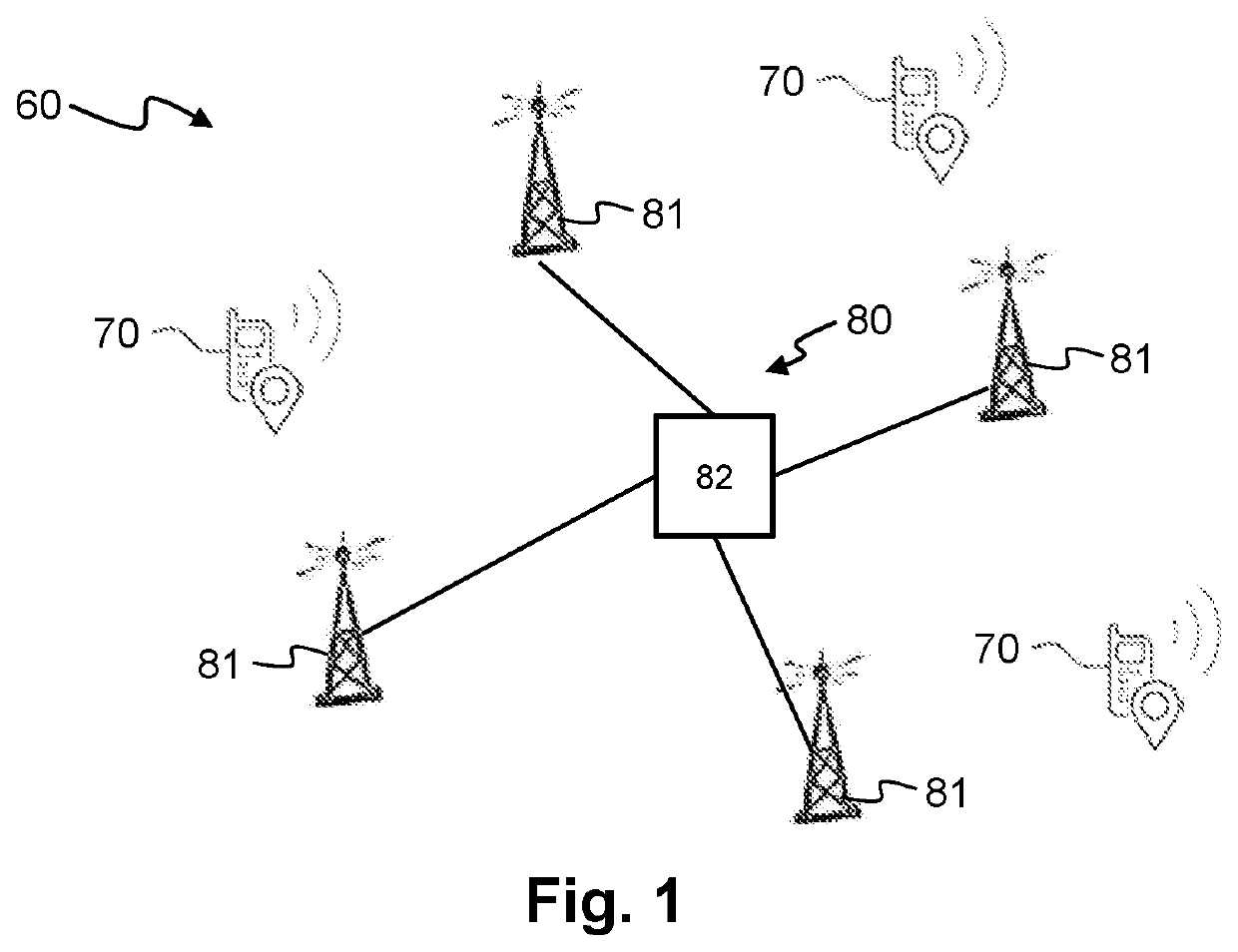Method and system for geolocating a terminal of a wireless communication system
- Summary
- Abstract
- Description
- Claims
- Application Information
AI Technical Summary
Benefits of technology
Problems solved by technology
Method used
Image
Examples
first embodiment
[0078]In a first embodiment, the geographical position of the terminal 70 comprises a latitude and a longitude as geographical coordinates.
[0079]By way of in no way limitative example, the latitude and the longitude of a geographical position are encoded in 24 bits (N=M=24). The most significant bit corresponds to a sign bit while the 23 least significant bits correspond to data bits encoding values lying between 0 and 223−1=8,388,607.
[0080]In order to pass to a standard latitude value lying in an interval [−90°; 90°], it should be noted that the 23 data bits make it possible to obtain a granularity of approximately 1.07×10−5 degrees of arc per unit. Knowing that the distance on the surface of the terrestrial globe corresponding to one degree of arc is approximately 110 km, the use of 24 bits for encoding a latitude value makes it possible to define a latitude with a precision of around 1.2 meters on the surface of the terrestrial globe.
[0081]Likewise, in order to pass to a standard...
second embodiment
[0128]For example, in a second embodiment, the geographical position of the terminal 70 includes a region identifier and a zone identifier. FIG. 5 shows schematically a division of a geographical territory into a grid of various regions R1 to R4 and various zones Z1 to Z9. The territory is first of all divided into various regions R1 to R4 in square form. The various regions R1 to R4 all have the same dimensions. Each region is next divided into various zones Z1 to Z9. They are also in square form and all have identical dimensions. As illustrated in FIG. 5, the various zones Z1 to Z4 are numbered in an identical scheme in each region R1 to R4. In the example shown in FIG. 5, there are only four regions R1 to R4 and each region R1 to R4 includes nine zones Z1 to Z9. It will of course be possible to envisage using a larger number of regions and / or a larger number of zones and / or different forms of zone and / or region.
[0129]In this second embodiment, the terminal 70 has a positioning de...
PUM
 Login to View More
Login to View More Abstract
Description
Claims
Application Information
 Login to View More
Login to View More - R&D
- Intellectual Property
- Life Sciences
- Materials
- Tech Scout
- Unparalleled Data Quality
- Higher Quality Content
- 60% Fewer Hallucinations
Browse by: Latest US Patents, China's latest patents, Technical Efficacy Thesaurus, Application Domain, Technology Topic, Popular Technical Reports.
© 2025 PatSnap. All rights reserved.Legal|Privacy policy|Modern Slavery Act Transparency Statement|Sitemap|About US| Contact US: help@patsnap.com



